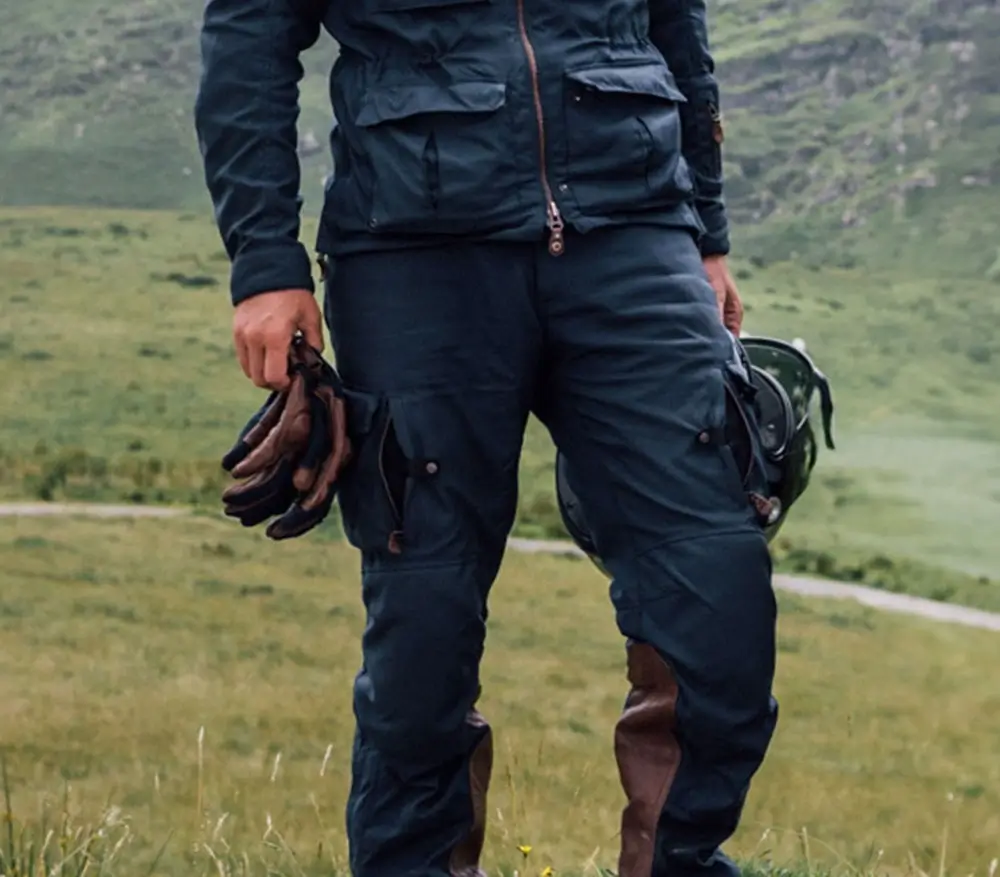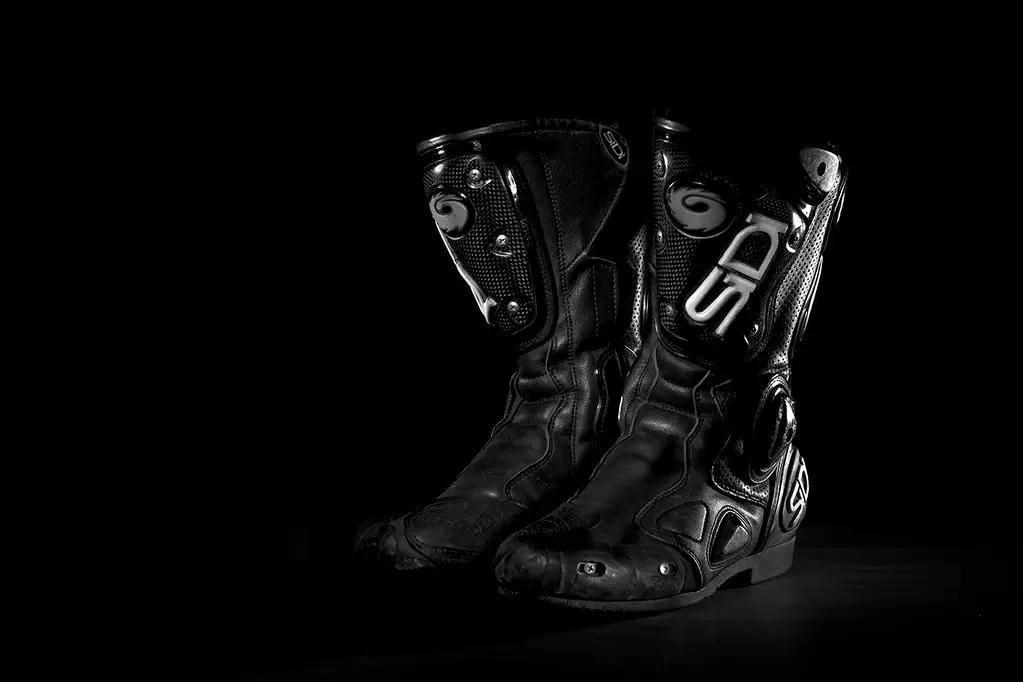Safe Motorcycle riding offers an unmatched sense of freedom, but it also comes with inherent risks. Unlike drivers in cars, motorcyclists are more exposed to the elements and more vulnerable in the event of an accident. For this reason, protective gear is essential for every rider. From helmets to boots, each piece of equipment plays a crucial role in enhancing safety and minimizing the impact of a potential crash.
In this article, we’ll explore the various types of motorcycle gear, highlighting how each item contributes to rider protection. Whether you’re a seasoned rider or a new enthusiast, understanding the importance of each piece of safety gear is crucial to staying safe on the road.
Table of Contents
- 1. The Helmet: Your First Line of Defense
- 2. Jackets and Protective Gear: Shielding Your Body from Impact
- 3. Gloves: Safe Your Hands and Fingers
- 4. Pants and Riding Trousers: Lower Body Protection
- 5. Boots: Protecting Your Feet and Ankles
1. The Helmet: Your First Line of Defense
Why It’s Important:
The helmet is, without a doubt, the most important piece of gear a motorcyclist can wear. It serves as the primary defense against head injuries in the event of a crash, which can be life-threatening. Helmets help absorb the impact of a collision, reducing the likelihood of serious brain injuries.
Types of Helmets:
- Full-Face Helmets: These helmets Provide the best protection by covering the entire head and face. and equipped with a strong outer shell and padded interior to protect against impact.
- Modular Helmets: Similar to full-face helmets, but with a flip-up chin bar for added convenience, especially for riders who want to switch between full-face protection and an open-face design when stopped.
- Open-Face Helmets: Offer less protection than full-face helmets, as they leave the chin and face exposed. These are generally less protective in high-speed crashes.
- Half Helmets: The least protective option, covering only the top of the head, leaving the face completely exposed.
How to Choose the Right Helmet:
- Look for helmets that meet safety standards, such as DOT (Department of Transportation) or ECE (Economic Commission for Europe) certifications.
- Ensure the helmet fits snugly without being too tight, as a loose helmet can cause discomfort and reduce effectiveness in a crash.
- Consider additional features like anti-fog visors, ventilation systems, and noise reduction.
Practical Steps to be safe:
- Always check the helmet’s condition before every ride.
- Replace helmets after any crash, even if there’s no visible damage, as the internal structure may have been compromised.
- Invest in a high-quality helmet with a proper fit to ensure maximum protection.

2. Jackets and Protective Gear: Shielding Your Body from Impact
Why It’s Important:
While a helmet protects your head, your body is equally vulnerable in a crash. Motorcycle jackets are designed to provide protection for your upper body, including your chest, back, shoulders, and arms. These jackets are typically made from durable materials like leather, textile, or mesh, and they often include reinforced padding or armor for additional impact protection.
Types of Jackets:
- Leather Jackets: Known for their toughness and abrasion resistance, leather jackets are a popular choice for many riders. They provide excellent protection in the event of a slide but may lack ventilation for hot weather.
- Textile Jackets: Lighter and more breathable than leather, textile jackets are made from synthetic fabrics like nylon or polyester. These jackets often come with waterproof layers and ventilation for comfort in various weather conditions.
- Mesh Jackets: Ideal for warm weather, mesh jackets offer good airflow while still providing protection. These jackets are generally lighter and more flexible than leather or textile options.
How to Choose the Right Jacket:
- Look for jackets with CE (Conformité Européenne) rated armor in the elbows, shoulders, and back for impact protection.
- Consider jackets with reflective materials to enhance visibility at night.
- Choose a jacket that fits well and is comfortable for long rides without restricting movement.
Practical Steps to be safe:
- Layer up with a base layer if the weather is cold.
- Ensure the jacket is equipped with armor or padding in high-impact areas like the back and elbows.
- Keep the jacket clean and check for wear and tear regularly.

3. Gloves: Safe Your Hands and Fingers
Why It’s Important:
In the event of a crash, the hands are often the first part of the body to make contact with the road. Protective gloves shield your hands, fingers, and wrists from abrasions and impact. They also help improve grip and control of the bike, reducing the chance of slipping in wet or cold conditions.
Types of Gloves:
- Full-Fingered Gloves: These gloves offer the most protection by covering the entire hand, including the fingers and knuckles. They often feature reinforced padding in key areas for added safety.
- Short Gloves: Ideal for warm weather riding, short gloves cover the palms and knuckles but leave the wrist area exposed. While they provide some protection, they are less suitable for high-speed riding or crashes.
- Winter Gloves: Designed for cold-weather riding, winter gloves feature insulation to keep hands warm while still offering protection from impact.
How to Choose the Right Gloves:
- Look for gloves made from high-quality materials like leather or textile, which offer abrasion resistance and flexibility.
- Ensure the gloves fit snugly without being too tight or loose.
- Consider gloves with added features like touchscreen compatibility or ventilation for comfort in varying weather conditions.
Practical Steps to be safe:
- Wear gloves every time you ride, no matter the weather.
- Check the stitching and padding of gloves regularly for wear and tear.
- Keep spare gloves with you on long rides in case of damage or unexpected weather conditions.

4. Pants and Riding Trousers: Lower Body Protection
Why It’s Important:
Motorcycle pants are designed to protect the legs and lower body during a crash. Similar to jackets, they often come with reinforced materials and impact protection, such as knee and hip armor. Motorcycle pants also offer better comfort and control over regular jeans or trousers, providing flexibility and durability on the bike.
Types of Pants:
- Leather Pants: Provide excellent abrasion resistance and protection but can be less breathable. Leather pants are often used for racing or high-speed riding.
- Textile Pants: Lightweight and breathable, textile pants are ideal for all-weather riding. They may come with waterproof liners and ventilation zippers.
- Kevlar Reinforced Pants: Some pants come with Kevlar lining for enhanced protection against abrasions. These are often used for casual or urban riding.
How to Choose the Right Pants:
- Choose pants with knee and hip armor for added protection.
- Look for pants with adjustable waistbands or knee armor for a custom fit.
- Ensure the pants provide a full range of motion without being too restrictive.
Practical Steps to be safe:
- Layer with thermal or waterproof liners for comfort in different weather conditions.
- Regularly check the stitching and armor placement for any damage or misalignment.
- Pair riding pants with armored shorts or knee guards for extra protection in case of a fall.

5. Boots: Protecting Your Feet and Ankles
Why It’s Important:
Boots are often overlooked, but they play a crucial role in protecting your feet, ankles, and shins. In the event of a crash, boots prevent foot and ankle injuries, which are common due to the impact and twisting forces that occur during a fall. Motorcycle boots are specifically designed to offer both protection and comfort, with reinforced soles and ankle guards to absorb shock and prevent twisting.
Types of Boots:
- Racing Boots: These boots are designed for high-speed riding and offer maximum protection, with reinforced areas around the toes, heels, and ankles. They’re ideal for track riders but may not be as comfortable for everyday riding.
- Touring Boots: Designed for long-distance riding, touring boots offer comfort, waterproofing, and protection for the feet and ankles.
- Cruiser Boots: These boots offer a balance of style and protection, ideal for casual or cruiser riders. They provide good ankle protection without being overly bulky.
How to Choose the Right Boots:
- Look for boots with a sturdy sole and adequate padding in the toe, heel, and ankle areas.
- Choose boots that offer flexibility for shifting and braking.
- Make sure the boots fit well and allow for proper foot movement while providing support.
Practical Steps to be safe:
- Clean boots regularly to maintain their integrity and appearance.
- Check for wear in the sole and ankle areas, as these are the most vulnerable parts.
- Pair boots with long socks to prevent chafing and discomfort.

From helmets to boots, every piece of motorcycle gear plays a crucial role in keeping riders safe on the road. By investing in high-quality, well-fitting gear, riders can significantly reduce their risk of injury during a crash. Always remember to wear full protective gear, no matter the distance of your ride. Safety should be your top priority, ensuring every ride is both thrilling and secure. Read more topics about safety here.